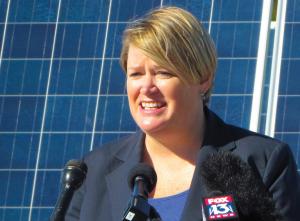Costs, Competitveness, Technology
Kerinia Cusick has worked in renewable energy and energy storage since 2008. During that time, she developed renewable energy projects, lobbied on renewable energy legislation, participated in electricity regulation cases, developed strategies for state government procurements of renewable energy, and advised private clients on solar procurement (as well as go-to-market strategies). Kerinia also co-led a team responsible for developing and executing a two-year strategy to launch a world-wide solar company into energy storage. In that role, Kerinia led greenfield development of solar and storage projects in California, participated in M&A to procure operational assets, led storage financeability, and supported joint development of storage-only projects. Most recently, she co-founded Center for Renewable Integration, developing policy solutions to integrate renewables onto the grid without impacting reliability.
Grid-connected battery storage is both a relatively new industry and a complex product. Its versatility naturally leads to confusion when trying to understand its applicability. Additionally, the rapid pace of change within the industry leads to misinformation and misperceptions.
Misperception #1: Battery Storage Costs Will Decline at Same Rate as Solar or Wind

Much has been written about the rapid decline of solar and wind costs, particularly in the last decade as costs have fallen dramatically. As the volume of installed solar costs doubles, costs decline by twenty to twenty-five percent.
This "learning rate" trend has been documented in many industries from aviation to electronics. As the volume of units produced increases, improvements in manufacturing processes, standardization, product redesigns, and automation all lead to cost declines.
Both wind and solar spent decades in slow growth mode, remaining a niche product used in very limited applications, struggling to build scale. But grid-connected battery storage is benefiting from manufacturing scale that has already been achieved in different industries, electric cars and consumer electronics.
The electricity generation and distribution industry should anticipate that cost of stationary grid-connected battery storage will drop even faster than solar or wind. Grid-connected storage is benefiting from the manufacturing advances being made for other sectors.

